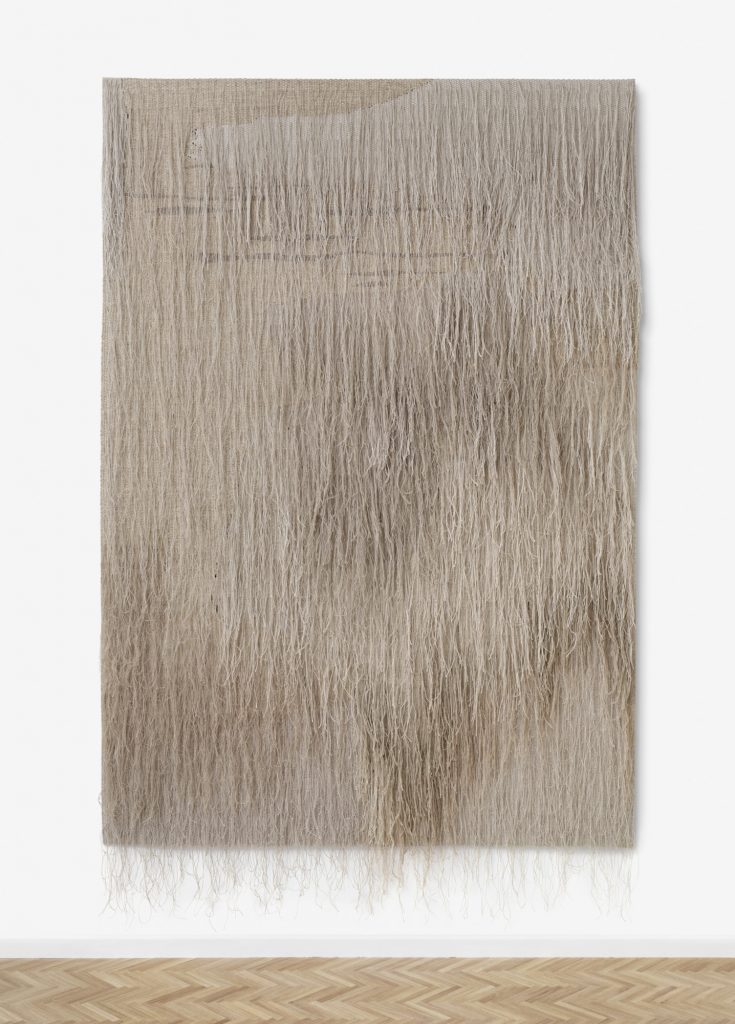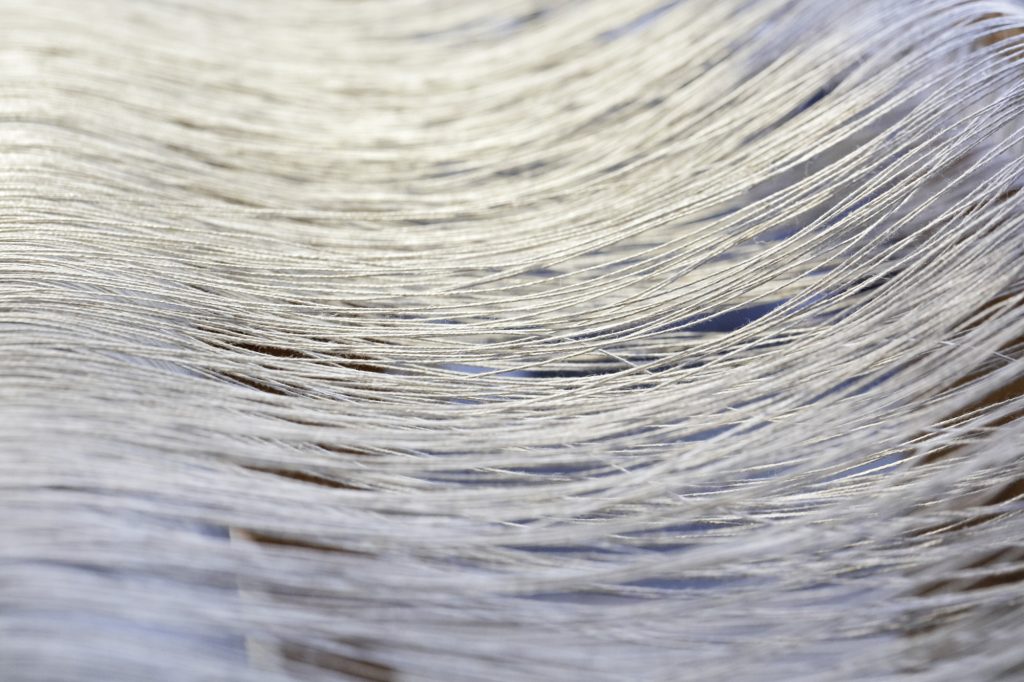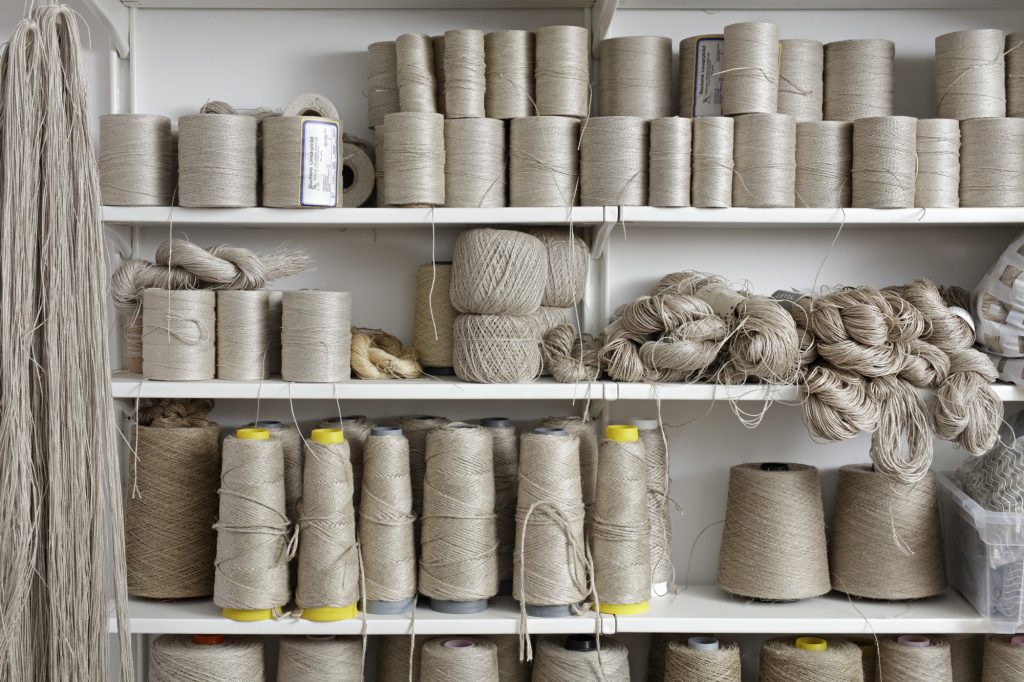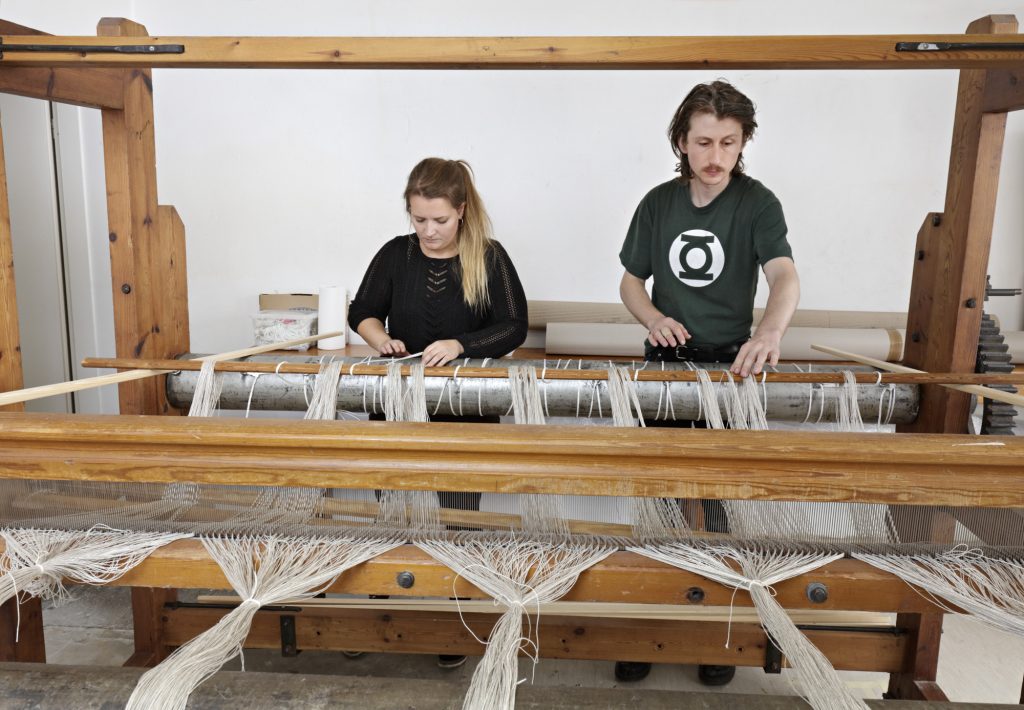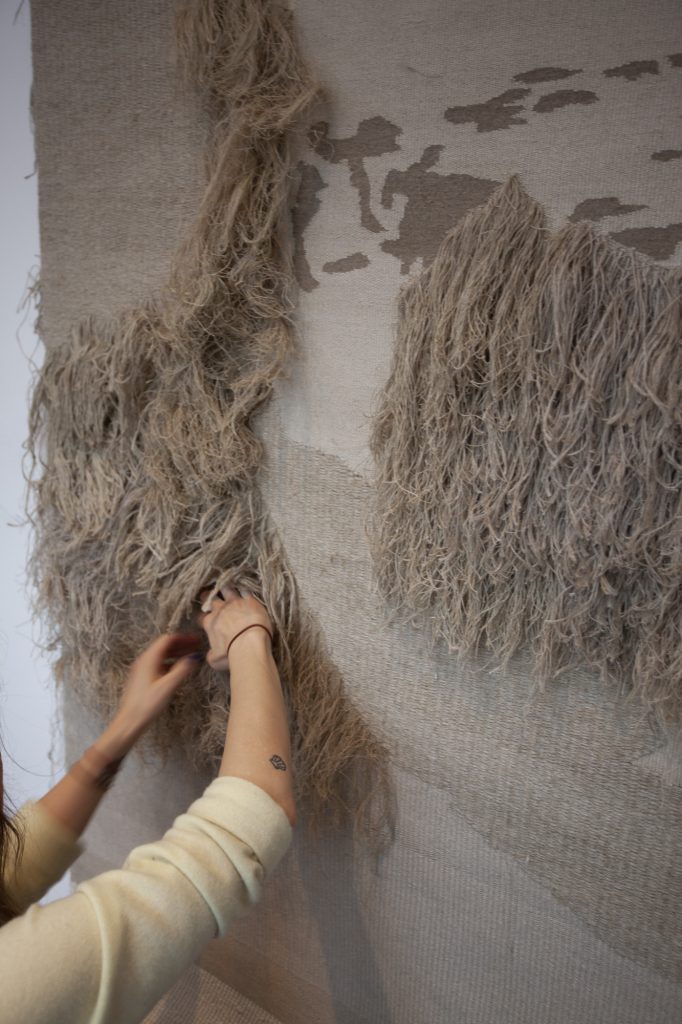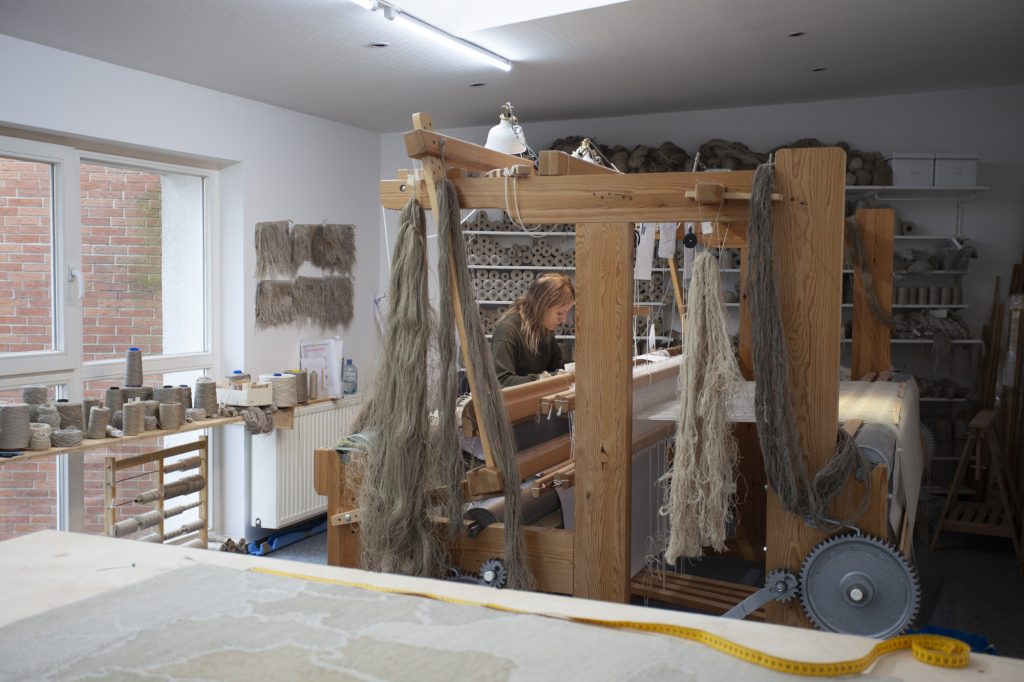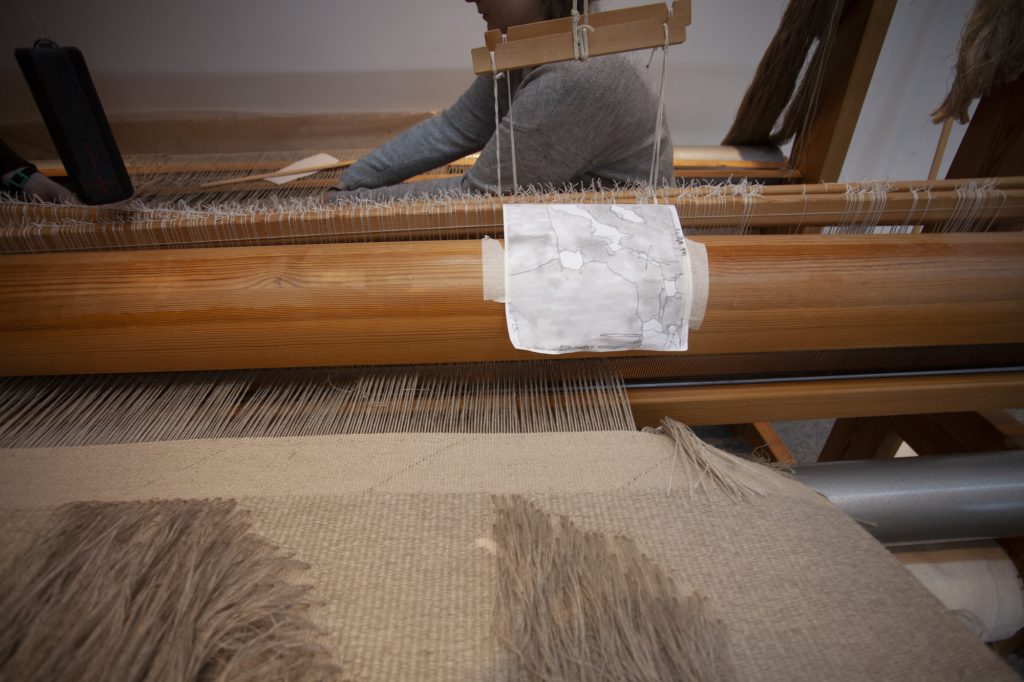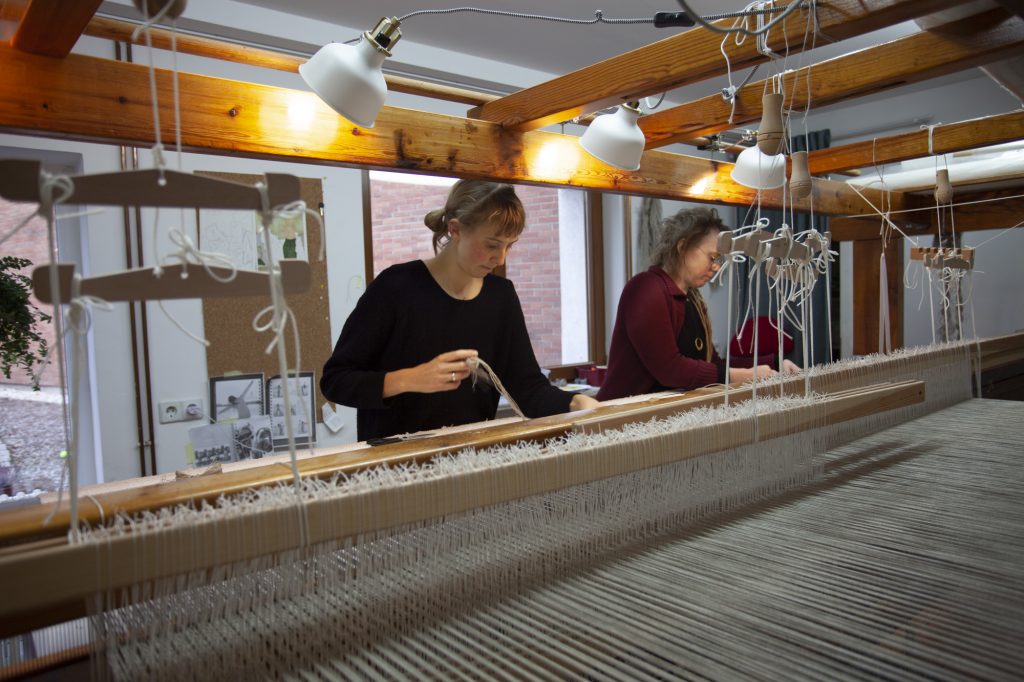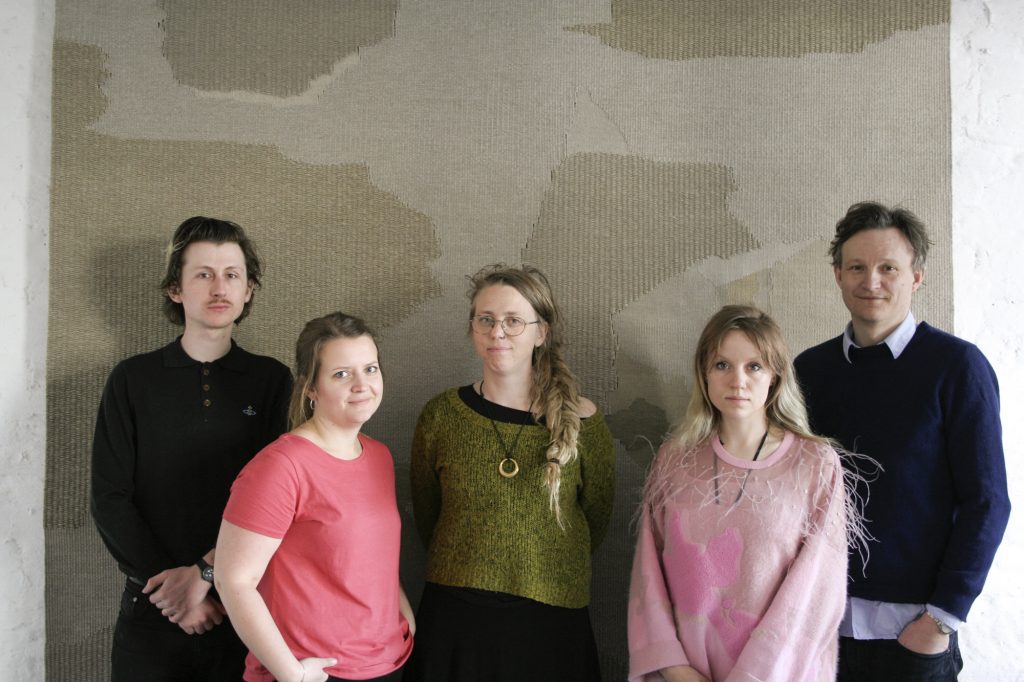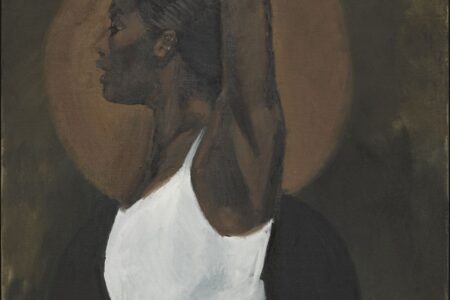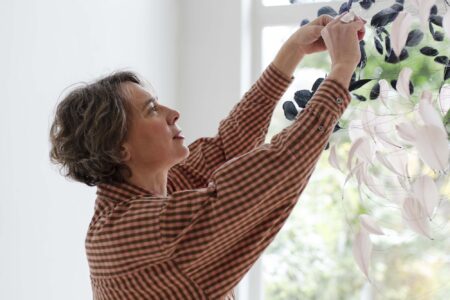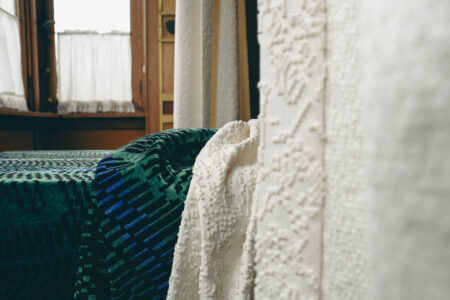
Andreas Eriksson: Subtle Landscapes
Swedish artist Andreas Eriksson creates woven tapestries based upon an interest in the fundamental material of painting: the canvas. TLmag speaks with the artist about the translation of painting to textile, the structured process of weaving, and mapping histories.
Swedish artist Andreas Eriksson creates woven tapestries based upon an interest in the fundamental material of painting: the canvas. Sourced from different geographical locations across Sweden, Eriksson collected masses of undyed linen yarns to create subtly evocative and tactile works. TLmag speaks with the artist about the translation of painting to textile, the structured process of weaving, and mapping histories.
TLmag: You have a multidisciplinary practice, but one that is mostly based around painting. I read a quote from you, saying weaving is like “making a painting from behind instead of in front”. Where did this idea of translating landscapes from paint to textile come from, and how did you find that process of reflection?
Andreas Eriksson (AE): My starting point with painting is always the material I work with. You can say you’re traditionally a landscape painter, and then you have the landscape as a starting point, or if you do still life painting you have a still life. But for me it’s very much about starting with the material itself, and the tools that I use. I was applying the paint in such a manner that it evoked the structure of the canvas. From that step it wasn’t very far to start making the canvases themselves. I started to collect linen threads, which is the traditional material of the canvas. I collected them from the north to the south of Sweden, threads from the 18th century to today. After a while we had more than fifty kilos of yarn, and we started to use them for weaving. It’s a very slow process. It also has to do with the soil. The terroir and the year it is from is what gives the linen different shades, since everything is undyed. So it’s a kind of mapping of the history of linen, and also a mapping of geographies, and then also a mapping of painting itself, and the tools you use. So you can see my paintings very much as a pure visual experience but you can also see me as a conceptual artist. I think I stand in between that somehow.
TLmag: How did you source these 18th century yarns?
AE: Facebook. You can find a lot of people who are into linen. We have so many nice letters, especially from people who inherited the yarn. No one is using it because people don’t weave at home anymore, but at the same time it’s impossible to throw away because it has sentimental value. When they find out we are collecting it and using it for these artworks, they are usually very happy.
TLmag: How was the process and experience of producing these tapestries?
AE: I think we’ve been working with the tapestries back and forth for ten years now. But the ones that we are showing in the Watercolour Museum now are from the last two and a half years. It’s about 13,000 weaving hours. It’s such a slow medium, so you need a lot of people. It’s fantastic when you get so much help to do something. It’s just amazing. But then you also find yourself suddenly having a company with people. Instead of being an artist you’re an employer. I’m not really used to it.
TLmag: Is that something you find difficult?
AE: I don’t like conflict at all, and I’m not very clear. With painting you’re spoiled. If you want to change something, you take the brush and you change it – it’s immediate. You don’t have to communicate with anyone, you can just go by instinct. What happens with the weavings is that you can’t see the entirety of what you’re doing. You can only see exactly what you’re doing at that moment. You have to create a structure from the beginning and then follow this idea. When you have people doing things for you, you have to communicate very clearly. It’s not easy to work for someone who is so intuitive, I think. So that’s been a challenge.
TLmag: A lot of your practice and concepts seem to draw upon themes of memory and place. Could you tell me about this and how these topics influence or inspire you?
AE: I’m not so sure if it’s about memory. I think you can read that in the finished results, but for me it’s much more about having a dry conceptual basis as a starting point. Of course, it’s very important that the work has its own integrity in the end. It can’t only be based on an idea, it has to walk over into a visual medium. I have a very early memory from my childhood, where I was looking into a pile of snow, and I lost myself in it. I couldn’t see if it was a mountain or if it was very close to me. I think that kind of memory is very close to what I’m actually doing with material. The material grows into a kind of unsecured illusion, somehow.
TLmag: Did your perception of weaving and working with textiles change through this process?
AE: Yes, definitely. It has also changed the paintings, because I used the paintings to make sketches for the tapestries, and then suddenly I started to turn the sketches that I made for tapestries back into paintings again. They have changed each other. Now I can see an end to this undyed linen concept, but I still feel there are interesting visual languages in tapestry that I would really like to continue with.
Andreas Eriksson’s exhibition From Sketch to Tapestry is on display at the Nordic Watercolour Museum until 25.04.2021. It will then be displayed at Skissernas Museum from 10.06.2021.
All images courtesy of Andreas Eriksson Studio.
